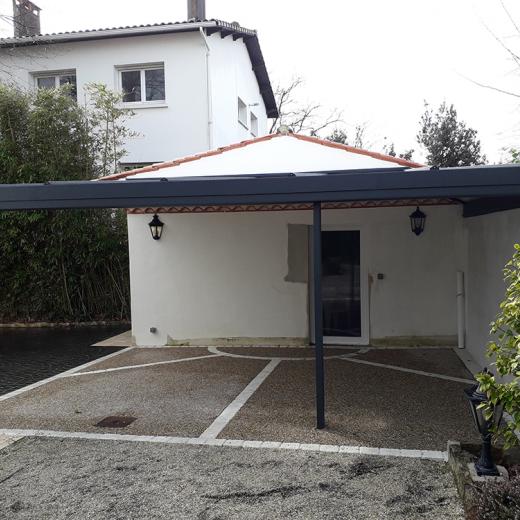While installing a carport is quick and easy, it is important to follow the correct procedures to ensure the best possible protection and performance. Click below to find out more.

Carports are an alternative to hard standing garages. So, while it may not require a great deal of structural work, there are certain procedures you will need to follow in order to ensure that your carport is strong and stable with the best possible protection and performance.
Remember that Akena carports are aluminium structures, equipped with two or four posts depending on the type and size of the carport. They come with a sloping roof or a flat roof, depending on the model chosen.

If you want a lean-to carport, more precisely against a wall, it is important to know the nature of the support: plaster, stone, wooden framework, external insulation, etc., in order to decide on the appropriate fixing (fixing to the wall and to the ground for a lean-to carport or fixing only to the ground with a free-standing carport in the case of a wooden framework or insulated house).
You should also identify any obstacles that could interfere with the project, such as downspouts, external lighting, drains, etc. so that they can be factored into the design of your carport.

Before actually putting your carport in place, you need to make sure that you have a level surface for it to stand on. Concrete is the best way to guarantee a high quality installation and the best possible resistance to weather conditions such as rain, hail or snow.
For example, carports can be mounted on concrete blocks, on a rough concrete base (at least 10 cm thick), or on a tiled terrace (at least 10 cm thick). We do not install carports on paving stones that are laid on sand, earth, grass or tarmac.
The posts cannot be fixed to a terrace made of paving stones laid on sand, a thin screed or natural soil. They must be laid on a concrete slab, on concrete blocks or on a low wall.
If you choose the privacy screen option, the ground support must be smooth and level.

We advise you not to install your carport near trees, to avoid complex cleaning of the roof and to avoid leaves getting trapped in the frame, gutters, etc.





